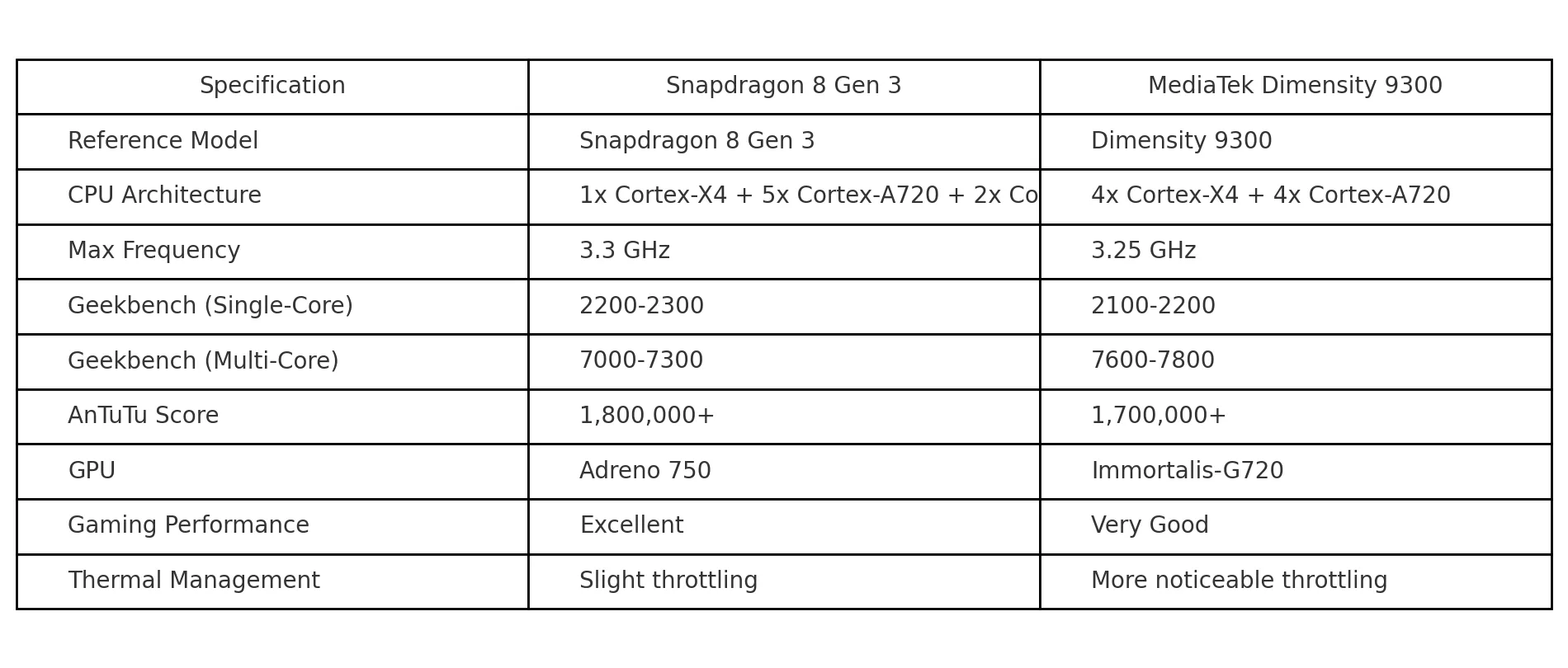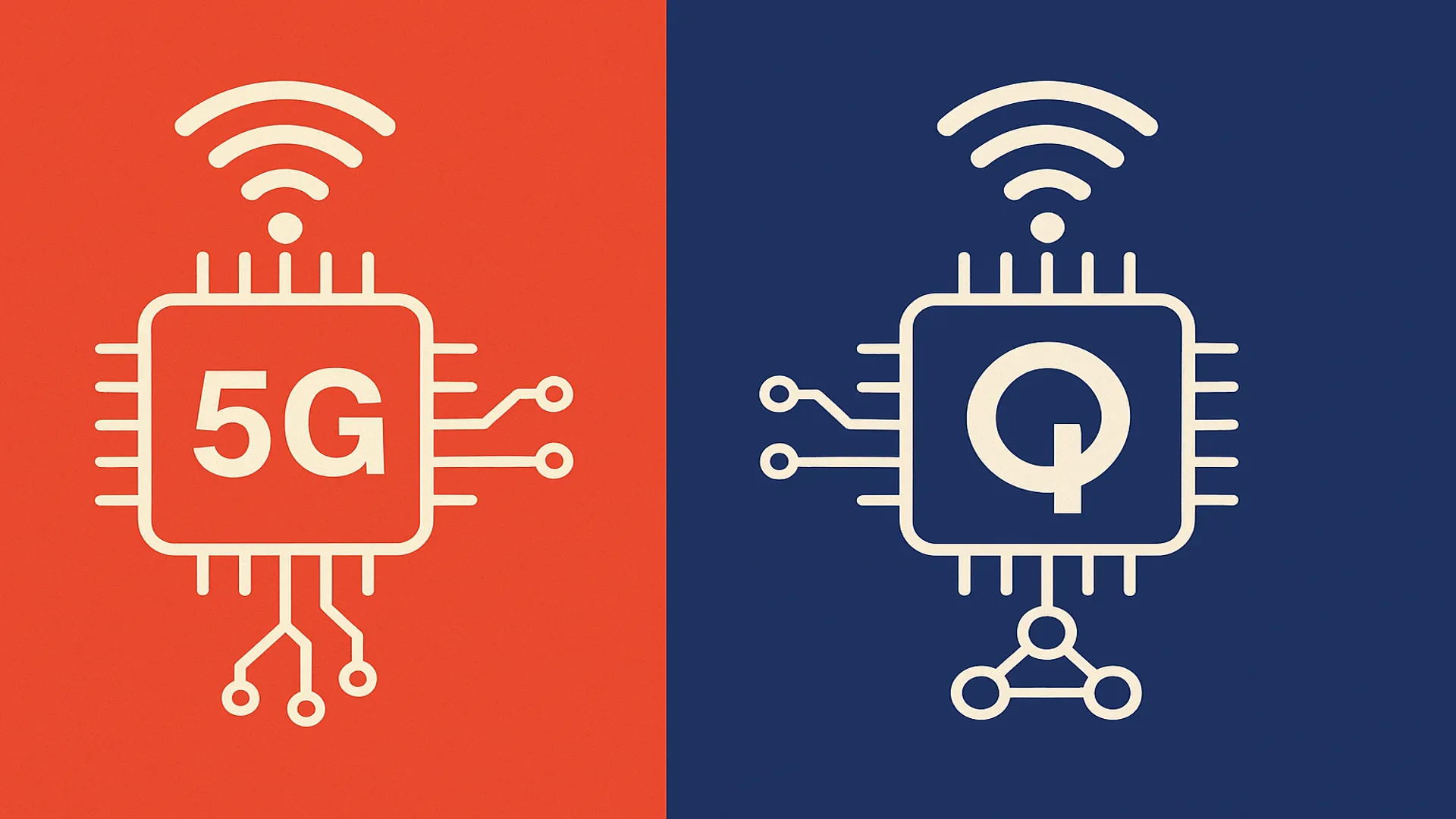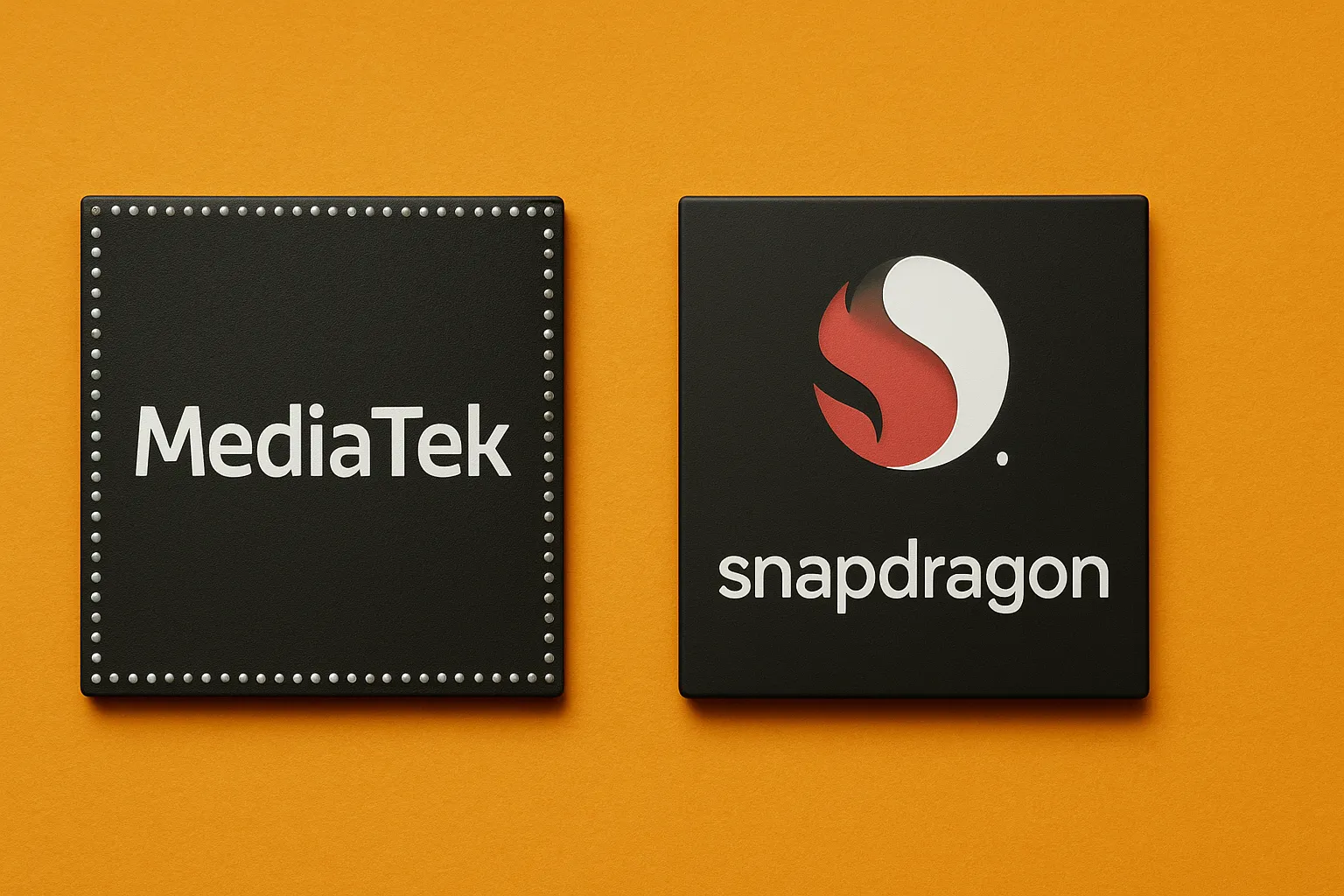For years, the conversation around mobile processors has revolved around one dominant name: Qualcomm. With its popular Snapdragon line, the American company has led the premium and mid-range market, establishing a reputation for power, energy efficiency, and network compatibility. But over the past decade, a persistent competitor has been quietly closing the gap: MediaTek.
What was once a brand associated with cheap phones and questionable performance has now become a serious player, especially with its Dimensity lineup. But the real question is—has MediaTek truly caught up with Qualcomm? Let’s break it down from multiple angles: raw power, efficiency, AI performance, connectivity, long-term support, and brand perception.
Raw Performance: Snapdragon Still Leads—But Just Barely
In terms of pure performance, Qualcomm has consistently topped benchmark charts, particularly in the flagship segment with its Snapdragon 8 Gen 1, Gen 2, and the latest Gen 3. Its custom cores and close collaboration with ARM have played a big role.
However, MediaTek has significantly narrowed the gap. The Dimensity 9200 and 9300 have posted comparable scores in Geekbench and AnTuTu, even outperforming the Snapdragon 8 Gen 2 in certain multi-core tasks thanks to their big-core-only architecture.
The difference now is marginal. Qualcomm still enjoys a slight advantage in GPU performance due to its Adreno line, but MediaTek is no longer a second-tier choice.

Energy Efficiency: Once a Weakness, Now a Strength
Historically, Qualcomm chips were more power-efficient with better thermal management. But with the latest Dimensity chips built on TSMC’s 4nm process, MediaTek has caught up significantly in energy efficiency.
In real-world usage, the difference is hardly noticeable. Sustained performance and heat control in today’s MediaTek chips are more than adequate—crucial for extended gaming or 4K video recording.
Bottom line: Efficiency is no longer a clear weakness for MediaTek. The two are neck and neck.
Artificial Intelligence: MediaTek Is Leading in Some Areas
AI is one field where MediaTek has made massive strides. Its Dimensity chips now feature dedicated APUs (AI Processing Units) capable of real-time background blur, object detection, live translation, and more—without relying on the cloud.
The Dimensity 9300, for instance, supports on-device generative AI models, something previously seen only in premium Qualcomm or Apple chips.
This enhancement is key not only for performance but also for privacy and latency. And in this regard, MediaTek is no longer just catching up—it’s leading in some aspects.
Connectivity and Network Compatibility: Qualcomm Still Ahead

This is one area where Qualcomm continues to hold a clear advantage. Its 5G modems (like the X70) offer broader global compatibility, stronger signal performance, and greater stability.
MediaTek has come a long way too, with full support for 5G SA/NSA, VoNR, and even WiFi 7. But in edge cases or across global carriers, Qualcomm remains the safer bet.
In summary: MediaTek is competitive, but Qualcomm is still more reliable in complex network environments.
Long-Term Support, Updates, and Developer Community
This is often overlooked, but crucial. Qualcomm enjoys a more open relationship with manufacturers and developers. Devices running Snapdragon tend to receive more software updates and custom ROM support.
MediaTek has historically been more closed off, though that’s starting to change. The company is now engaging more with the developer community, but skepticism still exists.
In terms of long-term software longevity, Qualcomm still has the upper hand.
Brand Perception: Stigma or Reality?
We can’t ignore the power of branding. Many consumers still associate MediaTek with “budget” or “inferior” devices, even if the performance is excellent. Qualcomm, by contrast, enjoys a reputation for premium quality.
This influences purchasing decisions. Some phones could sell better just because they have Snapdragon, regardless of the real-world performance.
However, that narrative is shifting. More major brands (like Vivo, Xiaomi, and OnePlus) are using MediaTek chips in both mid-range and premium models, improving its public image.
Real-World Examples

Let’s take a look at some real examples:
-
The Xiaomi 13T Pro, powered by Dimensity 9200+, performs exceptionally well—smooth UI, minimal heat, and solid battery life.
-
The ASUS ROG Phone 8, equipped with Snapdragon 8 Gen 3, is still the top choice for gaming—but at nearly double the cost.
-
The vivo X100 Pro, using the Dimensity 9300, has impressed critics with its camera and performance, placing it among the top flagships of 2024.
These examples prove that MediaTek is no longer a “budget compromise”—in some cases, it’s actually the superior option.
Price and Value for Money
This is where MediaTek shines. Its chips deliver flagship-level performance at lower prices, enabling manufacturers to offer powerful phones at more accessible price points.
Qualcomm, on the other hand, has faced criticism for rising chip prices year over year, which directly inflates the final retail price of devices.
If your goal is performance per dollar, MediaTek often delivers better value.
So, Who Wins in 2025?
The answer isn’t as clear-cut as it used to be. We can’t automatically say Snapdragon is better. It now depends on your priorities and use case.
-
If you need maximum gaming performance, unmatched network support, and long-term software support, Qualcomm still leads.
-
But if you’re focused on AI capabilities, efficiency, affordability, and excellent real-world performance, MediaTek is absolutely on par—and sometimes ahead.
Yes, MediaTek Is on Qualcomm’s Level—and Sometimes Beyond

Yes, MediaTek has caught up to Qualcomm in many critical areas. Its evolution in recent years has been impressive, and it now offers chips that can rival the Snapdragon 8 Gen 2—and even the Gen 3 in specific scenarios.
The future will be even more competitive. As generative AI, cloud gaming, and 6G emerge, the processor landscape will shift again. But one thing is clear: MediaTek is no longer a runner-up—it’s a leader.
So next time you see a phone powered by MediaTek, don’t dismiss it. You might just be looking at a hidden gem—or even a better performer than the Snapdragon alternative you were about to overpay for.




